Development of high-Strength coke production and waste heat recovery technologies for Course 50 process
The high strength coke production with high performance caking additive
The mitigation of CO
2 emission from blast furnaces is expected in the hydrogen reduction iron making process by decreasing the amount of coke in the blast furnace as reduction agent along with increasing hydrogen reduction ratio, where hydrogen is derived from coke oven gas (COG). The extremely high strength of coke would be required for the hydrogen reduction iron making process in order to maintain the appropriate gas flow in the blast furnace with less amount of coke than that of conventional iron making process.
High performance caking additive (HPC) which has a high fluidity as well as a high dilatability, could significantly improve the strength of coke, therefore, only a little amount of addition to a coal blend could make it possible to obtain high strength coke for blast furnace.
Based on the promising results of the high strength coke with the HPC at the laboratory scale experiments the coke production with HPC at the scale of actual coke oven was carried out and the effect of HPC on the coke strength improvement is confirmed. Produced cokes are used in the experimental blast furnace and it is verified that there is no wrong effect on the operation.
* You can see the figure enlarged. The effect of high performance caking additive (HPC) on improvement of coke strength
The effect of high performance caking additive (HPC) on improvement of coke strength
Coke production at scale of actual coke oven
Utilization of unused waste heat
In Japan most of the waste heat generated within steel plants is already recovered as steam or electricity, and is utilized effectively. Based on these world’s cutting-edge technologies for energy recovery and saving, the project will develop more advanced technologies to apply conventionally unused waste heat to CO2 capture – separation and recovery.
Waste heat application for CO2 capture – separation & recovery
Energy such as steam and electricity is required for CO
2 capture – separation and recovery – from blast furnace gas. If the energy is procured from external sources, CO
2 will be emitted at the production sites of the energy. Therefore in this project, technology development will be conducted to make use of conventionally un used waste heat that has not been utilized due to technological and/or economic difficulties.
The technologies to be developed to accomplish the aim are as follows:
- Development of sensible heat recovery from steelmaking slag
- Development of Kalina cycle power generation technology
- Utilization of PCM, or Phase Change Materials
- Utilization of heat pumps
Current waste heat recovery in steel works
* You can see the figure enlarged.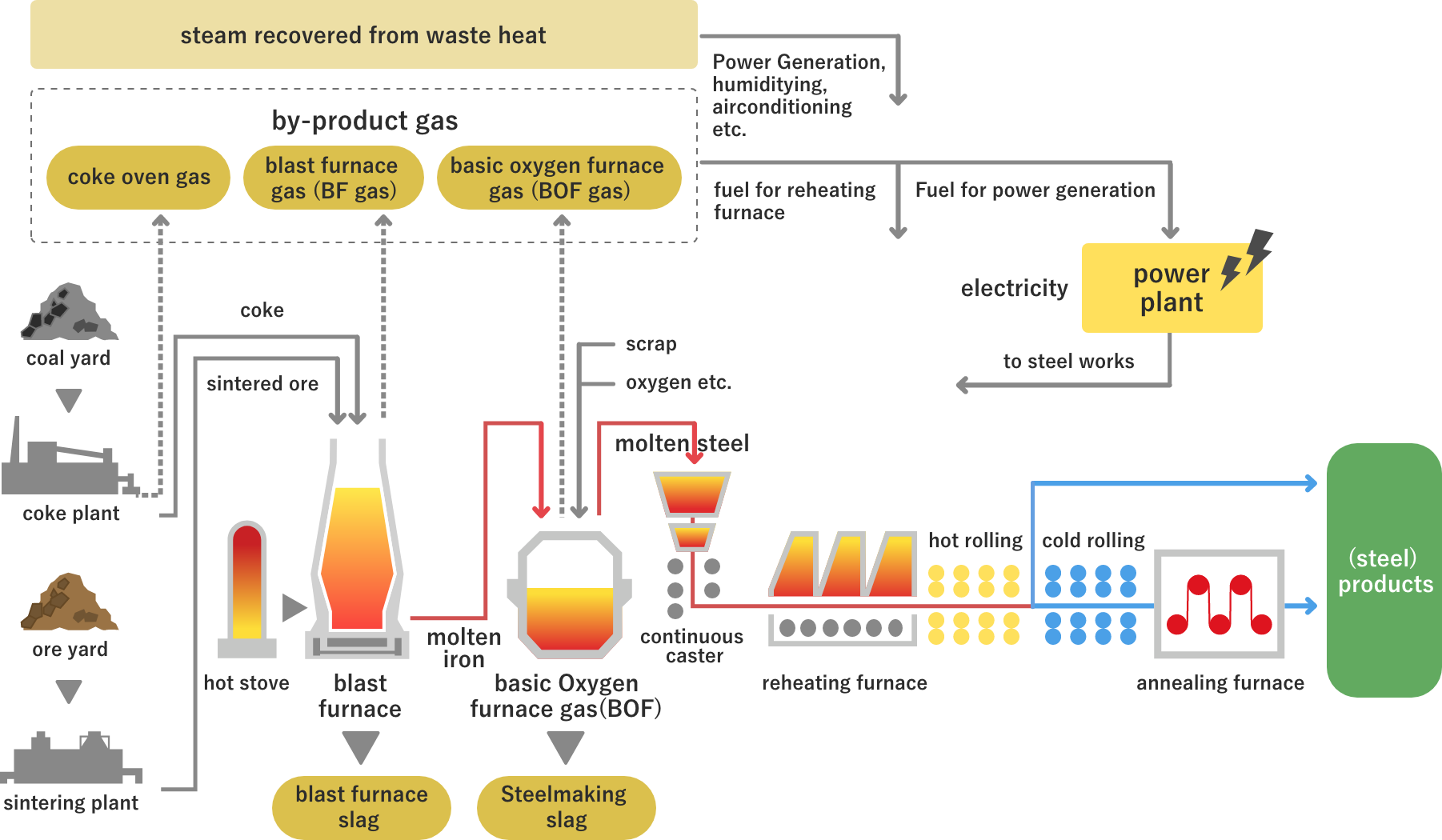
Heat recovery from low-temperature off-gas in steel mills
Waste heat recovery from low-temperature off-gas in steel mills is studied to provide thermal energy for the CO2 chemical separation process.
Since the gas has a large volume, it has a huge amount of thermal energy, but because of its low temperature, efficient heat utilization technology is required.
Therefore a heat transport network that can carry the recovered energy without waste and a high-performance heat exchanger that achieves both low pressure loss and highly efficient heat recovery are studied.
 High-performance heat exchanger for heat recovery from low-temperature off-gas
High-performance heat exchanger for heat recovery from low-temperature off-gas
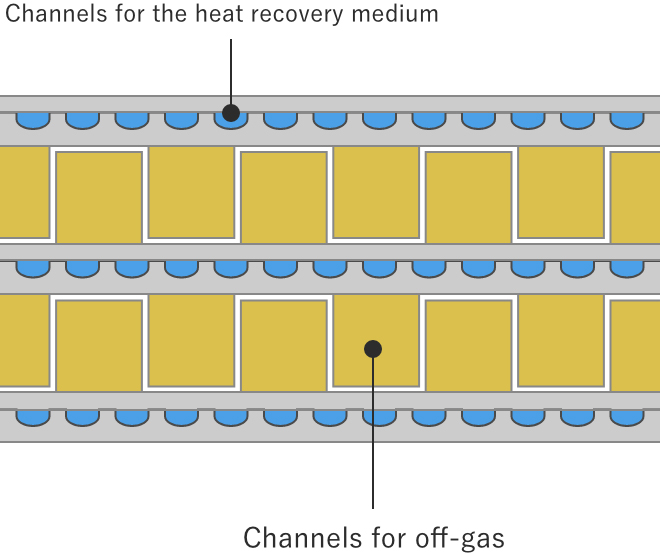 Schematic diagram of the developed heat exchanger (cross section of the center)
Schematic diagram of the developed heat exchanger (cross section of the center)
Development of sensible heat recovery from steelmaking slag
It is effective to recover and use unutilized high-temperature waste heat within a steel plant as the thermal energy required to regenerate CO
2-laden chemical absorbents by separating CO
2 from the absorbents. This project will develop a sensible heat recovery process from high-temperature steelmaking slag where molten steelmaking slag at as high a temperature as 1200 ℃ – 1600 ℃ is turned into a product. The key technologies to be developed include cooling method and shape control of slag to realize an effective sensible heat recovery system.
Technology for evaluating CO2 emission
In Course 50, we are evaluating the amount of CO
2 reduction at steelworks using blast furnace operation technology and CO
2 separation and recovery technology that were demonstrated using a test route. This assessment is based on a model of a steelworks that produces 8 million tons of crude steel per year, and the material and energy balances are calculated. We are optimizing the Course50 steelworks process by introducing previously developed technologies and changing various parameters.
* You can see the figure enlarged.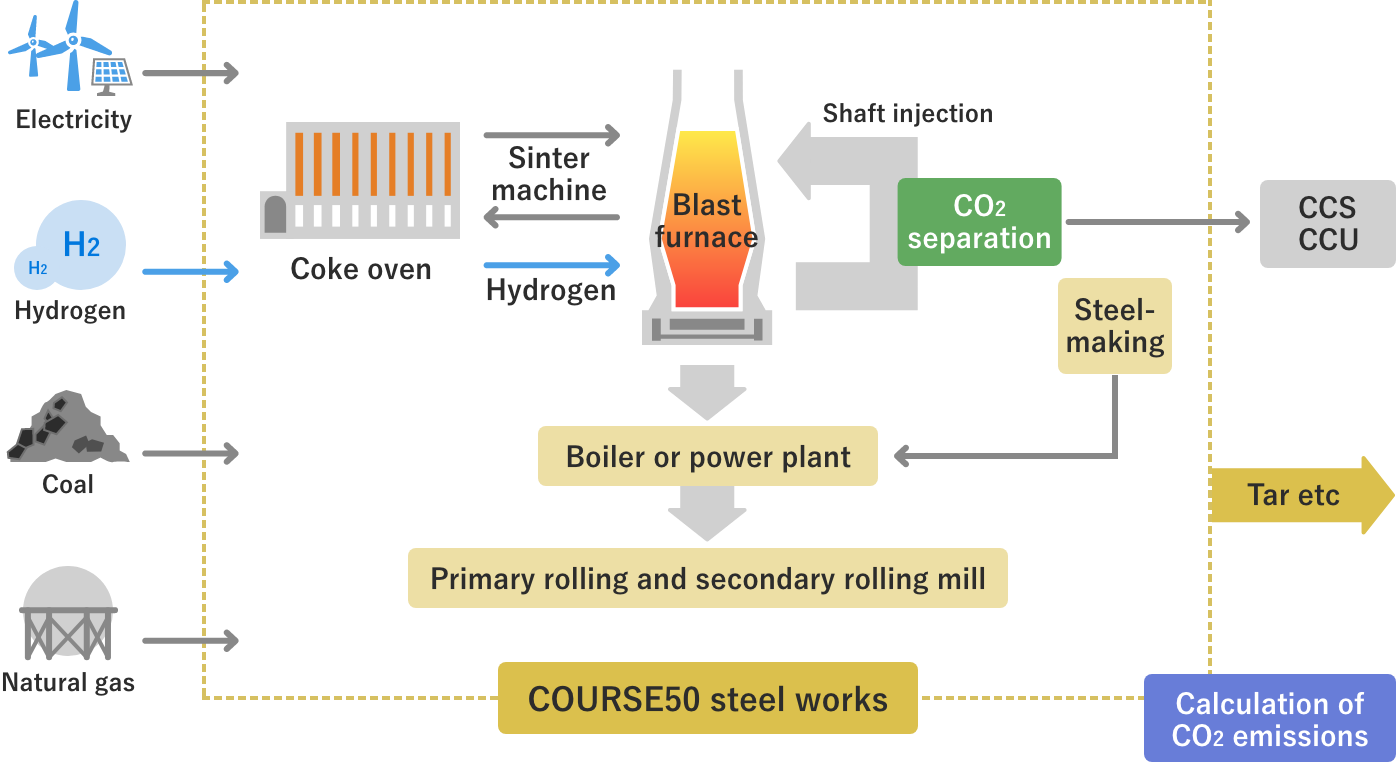
 The effect of high performance caking additive (HPC) on improvement of coke strength
The effect of high performance caking additive (HPC) on improvement of coke strength


 High-performance heat exchanger for heat recovery from low-temperature off-gas
High-performance heat exchanger for heat recovery from low-temperature off-gas
 Schematic diagram of the developed heat exchanger (cross section of the center)
Schematic diagram of the developed heat exchanger (cross section of the center)
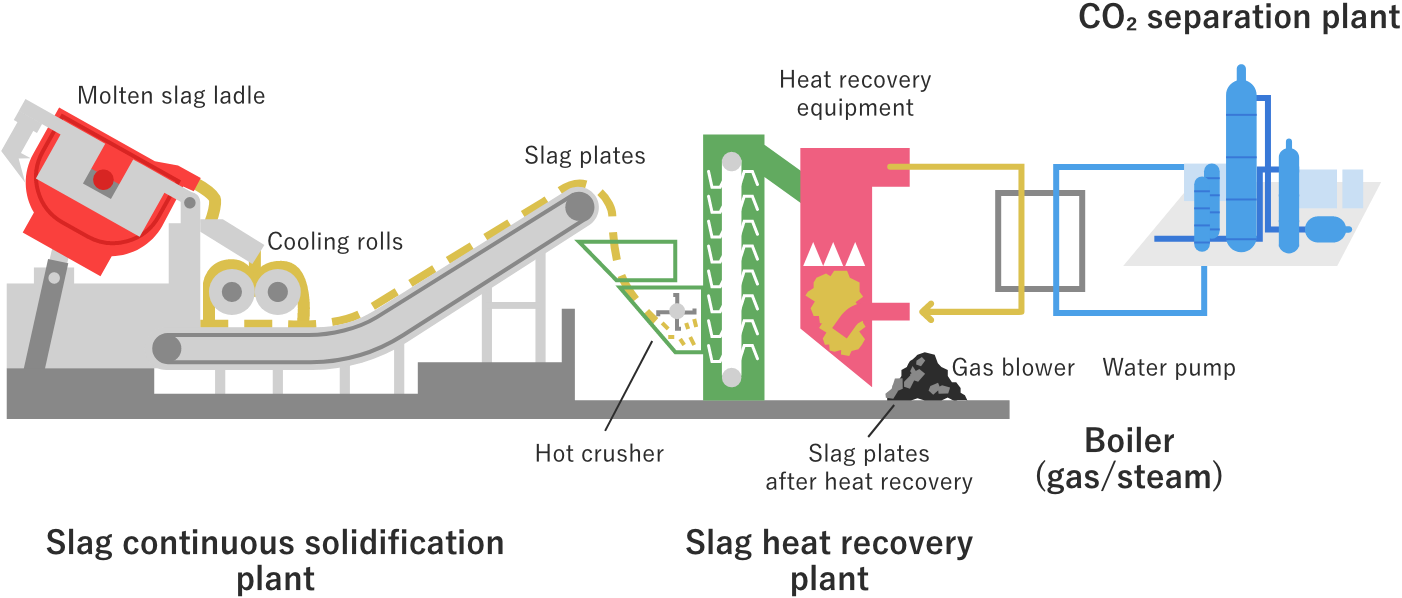
 Waste heat recovery equipment
Waste heat recovery equipment
 Slag continuous Solidification equipment
Slag continuous Solidification equipment

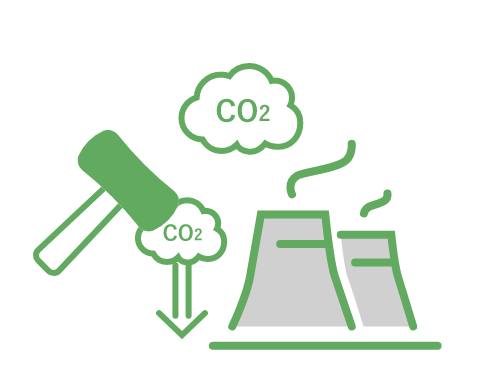 01
01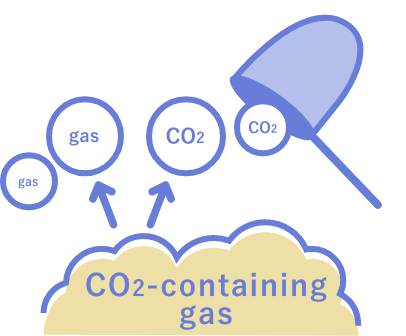 02
02 03
03